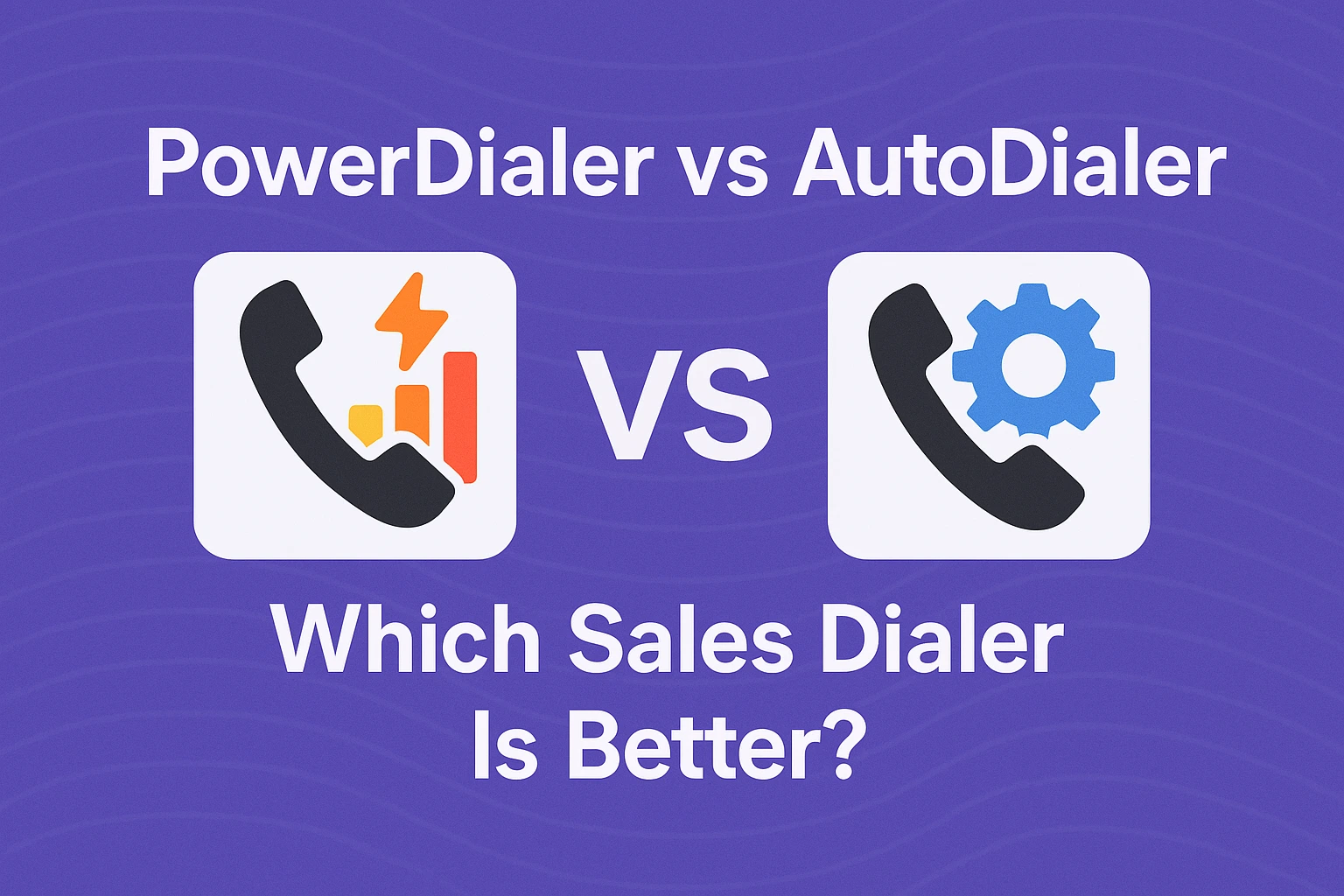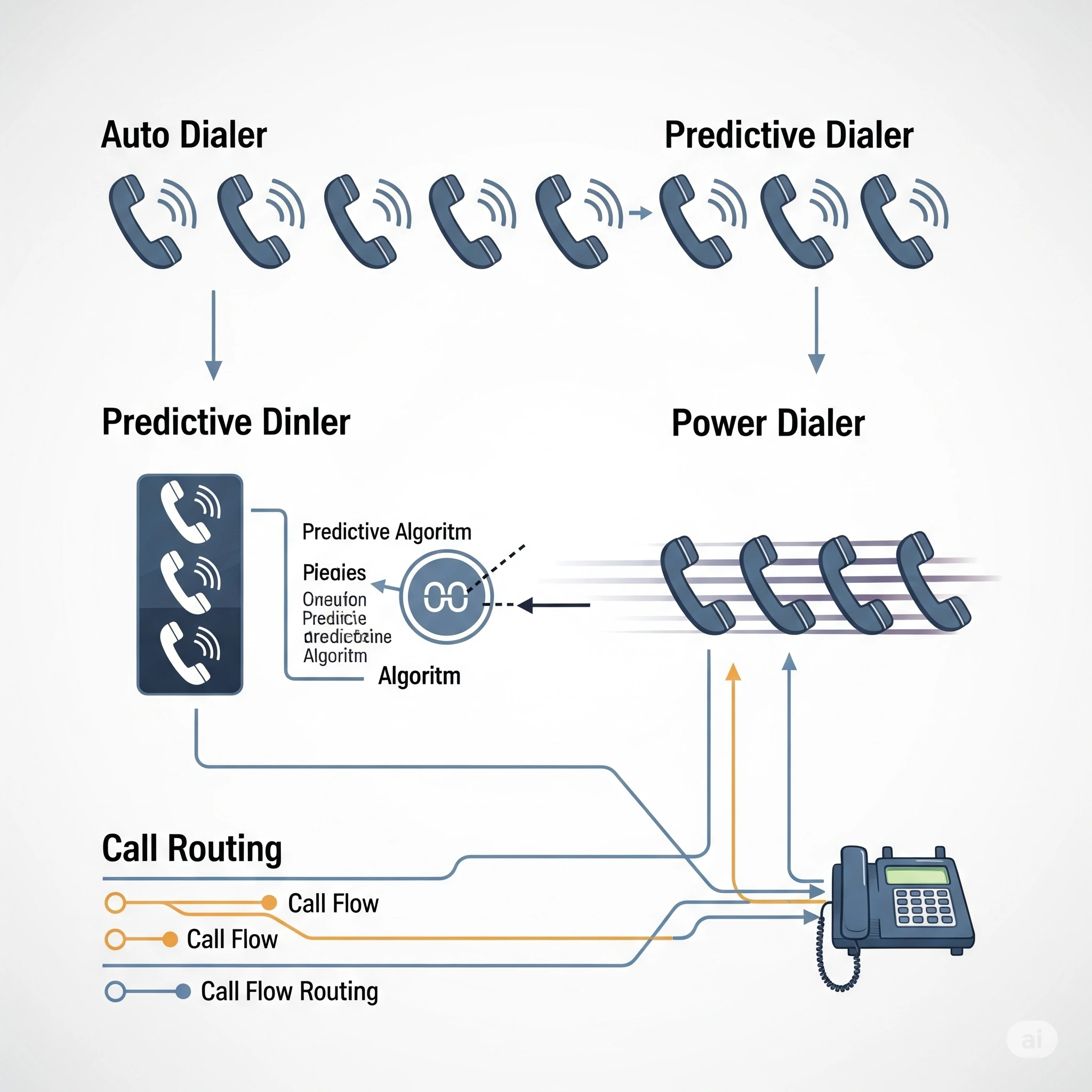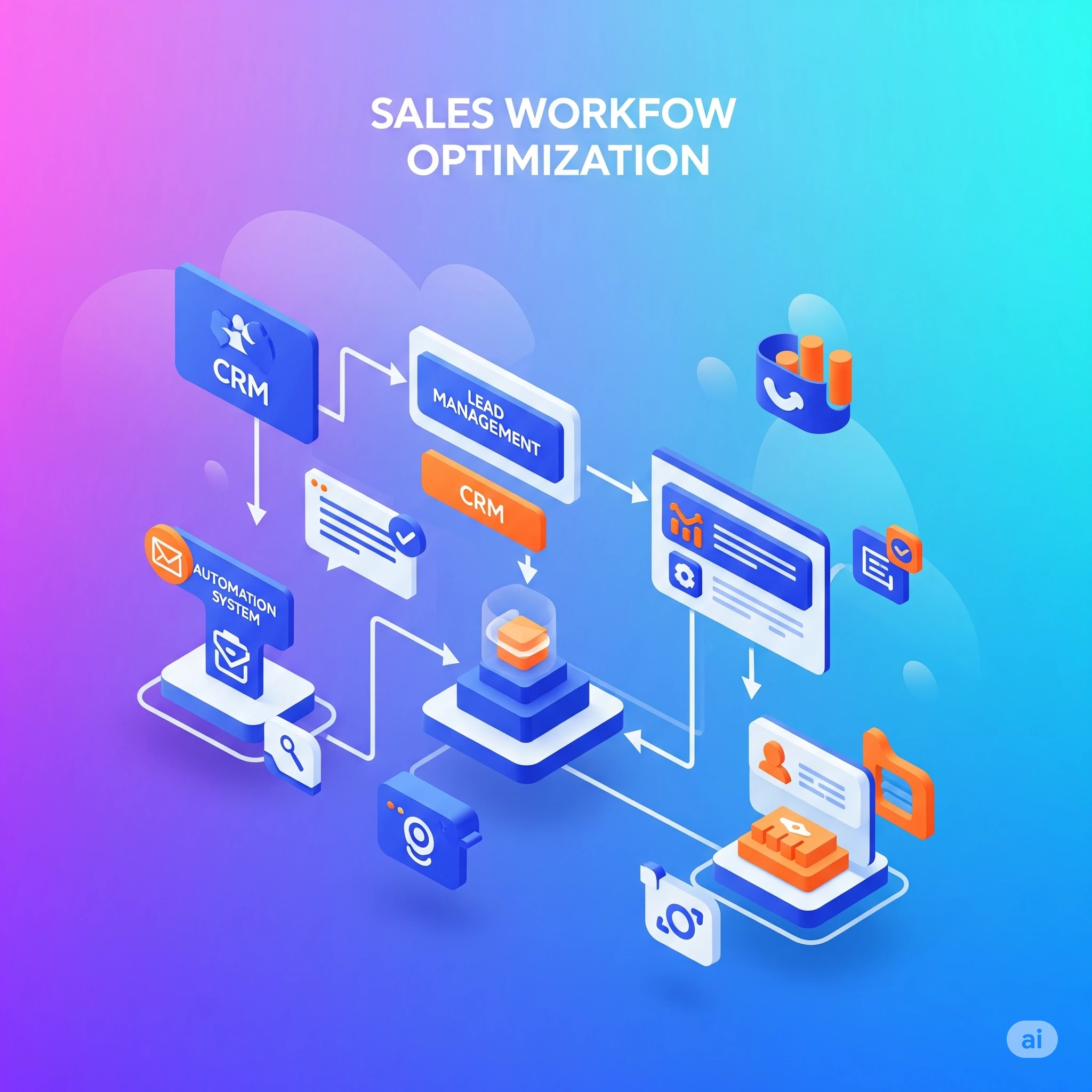PowerDialer vs AutoDialer: Which Sales Dialer Is Better?
Choosing between a PowerDialer vs AutoDialer isn’t just a software decision, it’s a sales strategy choice. Do your reps need speed, or do they need control? In this in-depth guide, we break down how each dialer works, when to use them, and what makes them different in real-world sales scenarios. Whether you’re running a fast-paced B2C campaign or nurturing high-value B2B leads, we’ll help you figure out which dialer actually improves your connect rates, call quality, and conversions. And we’ll show you why PowerDialer.ai is built to scale smarter outbound calling, without losing the human touch.

Choosing between a PowerDialer vs AutoDialer isn’t a tech decision, it’s a strategy call. One gives your reps control and space to personalize outreach. The other prioritizes speed and volume. The better fit depends on how your sales team works, what your leads expect, and how important those first few seconds on a call are to your conversion rate.
If you're in outbound sales, chances are you’ve already tried or considered both. Maybe your reps are frustrated with dropped calls. Maybe your team’s drowning in a sea of cold numbers. Or maybe you're trying to scale without losing the human touch. Either way, understanding the key differences between these dialers can save your team time and help them close more deals.
Understanding the Basics of Dialer Technology

Before you choose the right dialer for your sales team, it’s important to understand what these tools actually do. At the core, both PowerDialers and AutoDialers are designed to streamline outbound calling but they take very different approaches. PowerDialers prioritize control and conversation quality, letting reps decide when to dial and giving them space to prepare between calls. AutoDialers, on the other hand, focus on speed and scale, automatically dialing multiple numbers to maximize talk time. Both are part of a broader shift toward smarter, tech-enabled sales outreach but knowing how they work is key to choosing the right fit for your team.
What Is a PowerDialer?
A PowerDialer is a sales tool that helps reps call leads one at a time, with more control and better timing. Unlike AutoDialers that blast through numbers automatically, PowerDialers wait until the rep is ready to place the next call. This gives salespeople time to review lead details, personalize their approach, and stay focused on quality conversations. It’s especially useful for teams doing B2B outreach, handling high-value leads, or working in industries where every call needs to be thoughtful and strategic. Simply put, a PowerDialer helps teams work smarter not just faster.
It’s not about cranking through lists. It’s about quality conversations.
How It Works
After a call ends, the rep sees the next contact and clicks to start the next dial. That moment of pause matters. It gives them time to check the lead’s history, recall the previous touchpoint, and enter the call prepared.
Why Sales Teams Like It
- It supports thoughtful, informed calls
- Reduces awkward cold starts and dropped leads
- Helps with compliance by avoiding auto-dial risks
- Keeps reps focused without feeling rushed
For sales reps who value preparation and managers who track quality over quantity, it’s the tool of choice.
What Is an AutoDialer?
An AutoDialer is a calling system that automatically dials a list of phone numbers for your sales team, without requiring reps to click or initiate each call. It connects answered calls to available agents and skips over busy signals, voicemails, or disconnected lines. This helps teams move through large call lists quickly and maximize talk time. AutoDialers are commonly used in high-volume B2C environments, like telemarketing, surveys, or appointment reminders, where speed and efficiency matter more than personalization. It’s a volume-driven tool built for reaching as many people as possible in the shortest time.
How It Works
The system automatically dials from your list and continuously pushes answered calls to reps. No prep time. No buffer. Just back-to-back conversations or attempts, at least.
When It Makes Sense
- B2C campaigns with large lead lists
- Quick outbound pushes like surveys or reminders
- Environments where speed matters more than personalization
In short, if you're looking to maximize touches per hour, this is the tool. But it’s not without its drawbacks.
Key Differences Between PowerDialers and AutoDialers
Let’s cut through the noise. Here’s how these dialers stack up.
Call Timing and Control
PowerDialers give control back to the rep. Calls happen at their pace, not the machine’s.
AutoDialers move on their schedule. You answer calls as they come in.
Volume vs. Conversation
If you're chasing volume, AutoDialers win. But if every call needs context, personalization, or follow-through. PowerDialers are a better fit.
Reps vs. Automation
PowerDialers support reps. AutoDialers replace decisions with speed. One leans into human engagement, and the other leans out.
Compliance Risks
Regulations like TCPA make AutoDialers a legal minefield if not configured correctly. PowerDialers reduce that risk by keeping dialing in the rep’s hands.
CRM Integration
Modern PowerDialers (like PowerDialer.ai) sync seamlessly with your CRM. That means better workflows, smarter follow-ups, and more informed calls.
When to Use a PowerDialer
Use Cases That Fit
- Selling high-ticket products
- B2B teams reaching C-level buyers
- SDRs running multi-step outreach cadences
- Teams that research leads before calling
A PowerDialer shines when your reps need to think before they talk. It’s for teams that value impact over pace.
Why It Works for Inside Sales
Inside sales isn’t a volume game, it’s a trust game. And trust takes time. PowerDialers lets reps approach each conversation with context, confidence, and clarity.
Key Features:
- One-click dialing with rep-controlled pacing
- Seamless CRM integration for real-time data access
- Smart call disposition and follow-up tracking
- Customizable workflows based on lead type or campaign
- Live analytics on call outcomes and rep performance
- Reduced risk of dropped calls or TCPA violations
Pros and Cons of PowerDialers
What Works:
- Higher-quality conversations
- More relevant calls
- CRM-connected workflows
- Better call dispositioning and tracking
What Doesn’t:
- Slower raw volume
- Requires active reps who are willing to prep
If you’re managing a small but skilled sales team, this tradeoff is often worth it.
When to Use an AutoDialer
Use Cases That Fit
- Large-scale B2C campaigns
- Promotional or time-sensitive outreach
- Voice broadcast campaigns or surveys
AutoDialers make sense when you’re casting a wide net. If your message doesn’t change from call to call, or if personalization isn’t expected, this tool keeps things moving.
Key Features:
- Automatic dialing of multiple numbers simultaneously
- Call routing to the next available rep
- High-speed outbound calling with minimal manual input
- Basic reporting on call volume and connect rate
- Pre-recorded voicemails or messages for unanswered calls
- Optimized for fast list penetration and high-volume campaigns
Pros and Cons of AutoDialers
What Works:
- High call throughput
- Low downtime between connections
- Good for call centers with scripted outreach
What Doesn’t:
- Increased drop rates
- Potential compliance issues
- No real personalization
It’s a tool for speed, not strategy.
Choosing the Right Fit for Your Sales Workflow

This isn’t about which tool is "better", it’s about what’s better for you.
Team Size and Style
Smaller teams that focus on quality outreach will benefit more from PowerDialers. Larger call centers chasing volume will lean toward AutoDialers.
Campaign Type
If your campaigns depend on research, notes, and follow-up steps. PowerDialer all the way. If you're blasting offers, AutoDialers can save time.
Tech Stack
A dialer that doesn’t integrate with your CRM is a bottleneck. PowerDialer.ai connects with major CRMs so your data stays aligned and your team stays efficient.
Budget vs ROI
AutoDialers may cost less upfront, but PowerDialers deliver more per call. It’s not just about how many calls you make, it’s about how many convert.
Call Quality and Conversion Rates
PowerDialers lead to more focused calls, better lead conversations, and stronger outcomes. AutoDialers can cause disconnects, awkward call handovers, and missed opportunities.
Why Sales Teams Are Moving to PowerDialer.ai
Sales teams today don’t just want to call faster they want to close smarter. That’s why so many are switching to PowerDialer.ai. It gives reps more control over their outreach without slowing them down. With seamless CRM integration, customizable pacing, and live analytics, reps can prep, personalize, and pivot between calls effortlessly. Managers love the visibility; reps love the simplicity. Instead of pushing through hundreds of calls blindly, your team can focus on the conversations that move the needle. It's a productivity boost that feels tailored to how real sales teams work.
Here’s Why It Works:
- One-click CRM access for every call
- Live analytics to track real-time performance
- Customizable pacing for each campaign or rep
You don’t need to choose between speed and quality anymore. You can have both.
Ready to see how PowerDialer.ai fits your team? Book your free demo now.
PowerDialer.ai vs AutoDialers: A Real-World Comparison
AutoDialers were built for volume, not strategy. In fast-moving environments, that sounds great, until leads start slipping through the cracks. PowerDialer.ai flips the script by putting control back in the hands of your salespeople. It’s not just about making more calls; it’s about making the right ones. Where AutoDialers can feel rigid and impersonal, PowerDialer.ai helps reps stay sharp, relevant and focused. In real sales teams, that difference adds up to better engagement, fewer dropped calls and higher close rates.
If you’re tired of chasing leads and want to connect with them, this platform gives your team the tools to do it.
Get started with a PowerDialer.ai demo today and see the difference for yourself.
FAQs
What’s the main difference between a PowerDialer and an AutoDialer?
PowerDialers let the rep initiate calls and control pacing. AutoDialers dial automatically and route calls to available agents as they connect.
Are PowerDialers better for B2B sales?
Absolutely. PowerDialers help reps tailor their approach, which is crucial in longer, relationship-based B2B sales cycles.
Can AutoDialers get you in legal trouble?
They can if you’re not careful. AutoDialers that don’t follow TCPA rules risk serious penalties. PowerDialers are much safer for compliance.
Will a PowerDialer work with my CRM?
If you're using platforms like Salesforce, HubSpot, or Pipedrive, tools like PowerDialer.ai integrate smoothly and keep everything in sync.
Which dialer is better for remote teams?
PowerDialers are often the better choice. They help remote reps manage leads, track activity, and stay productive, without burning them out.
